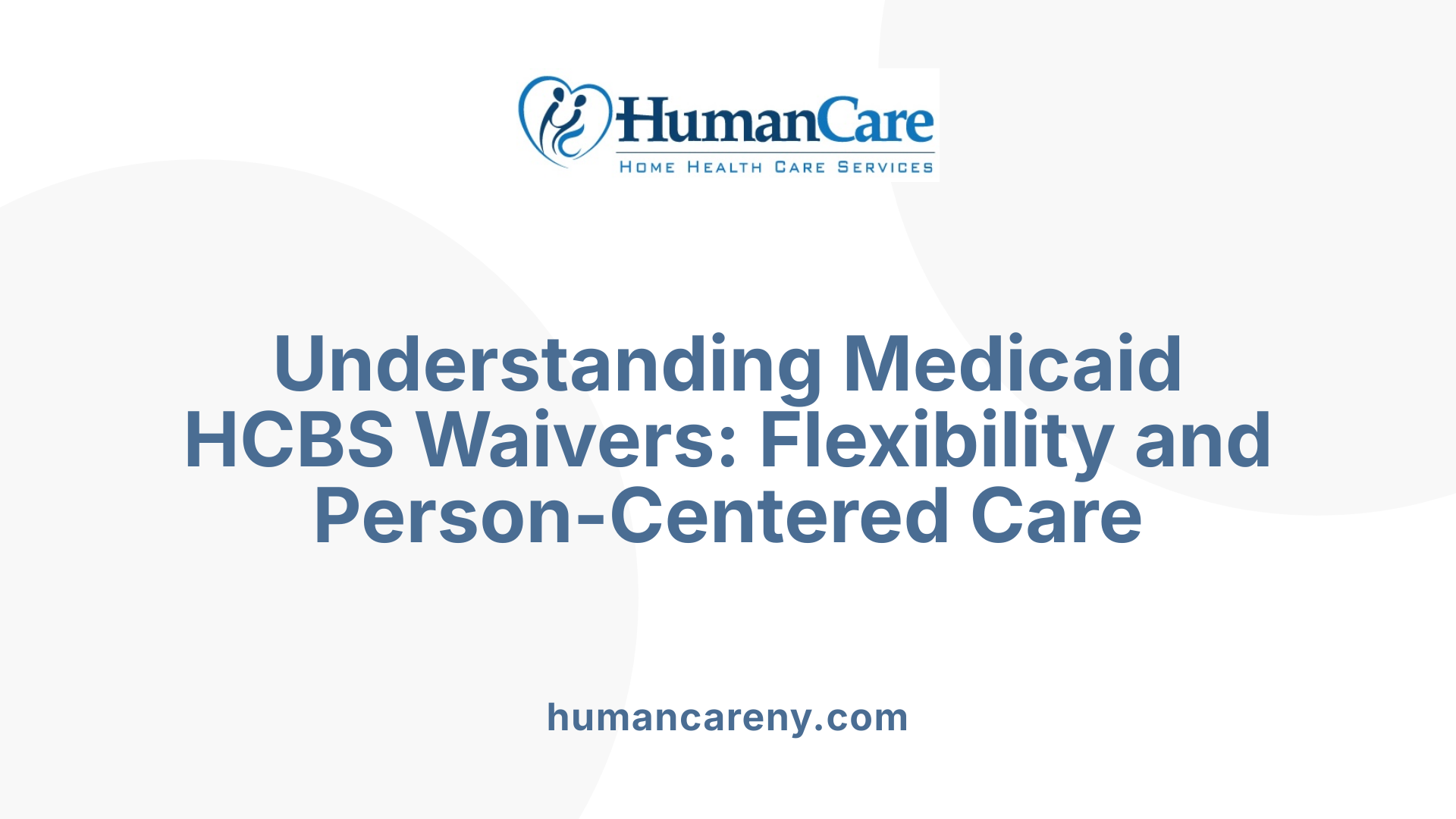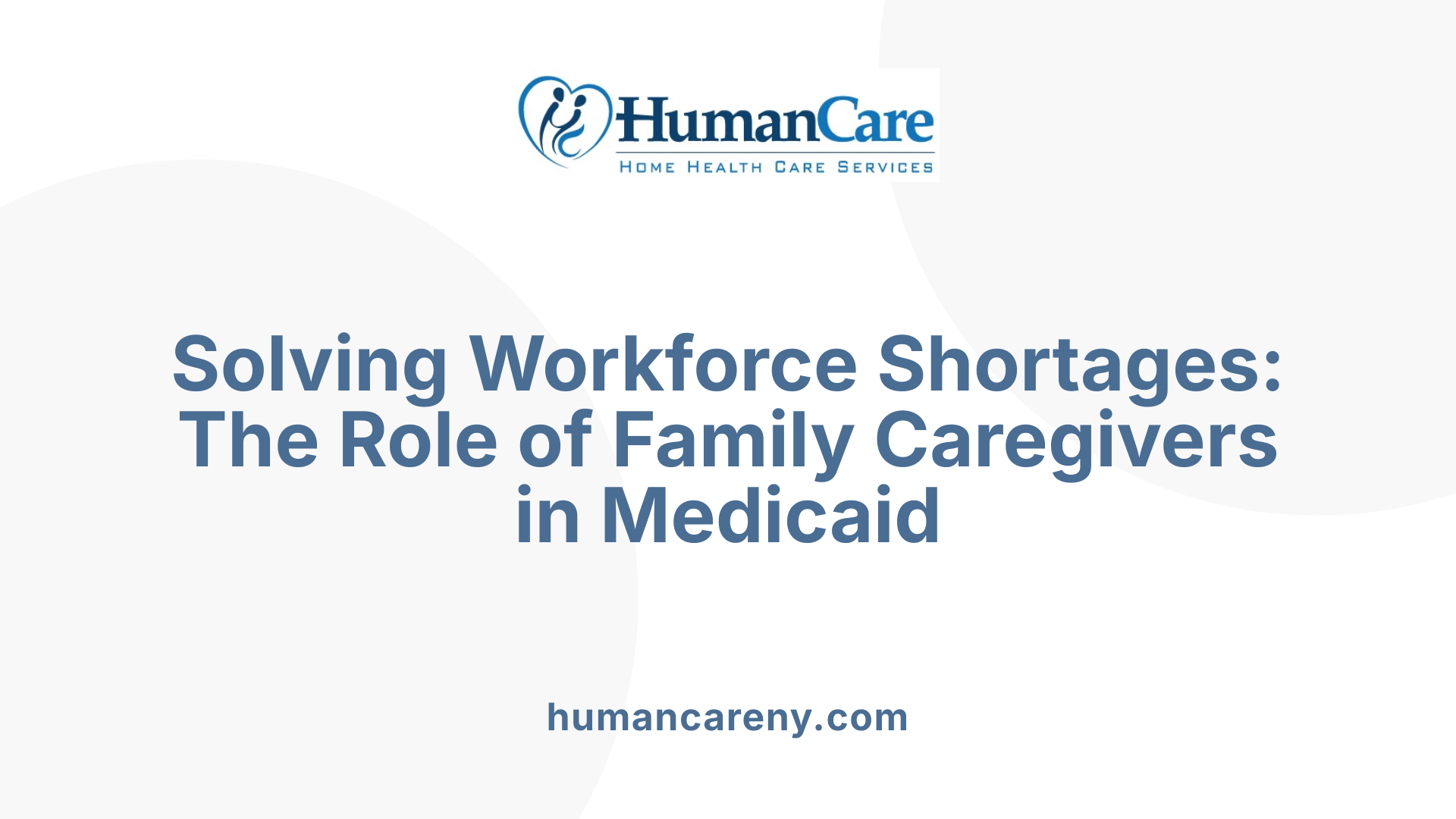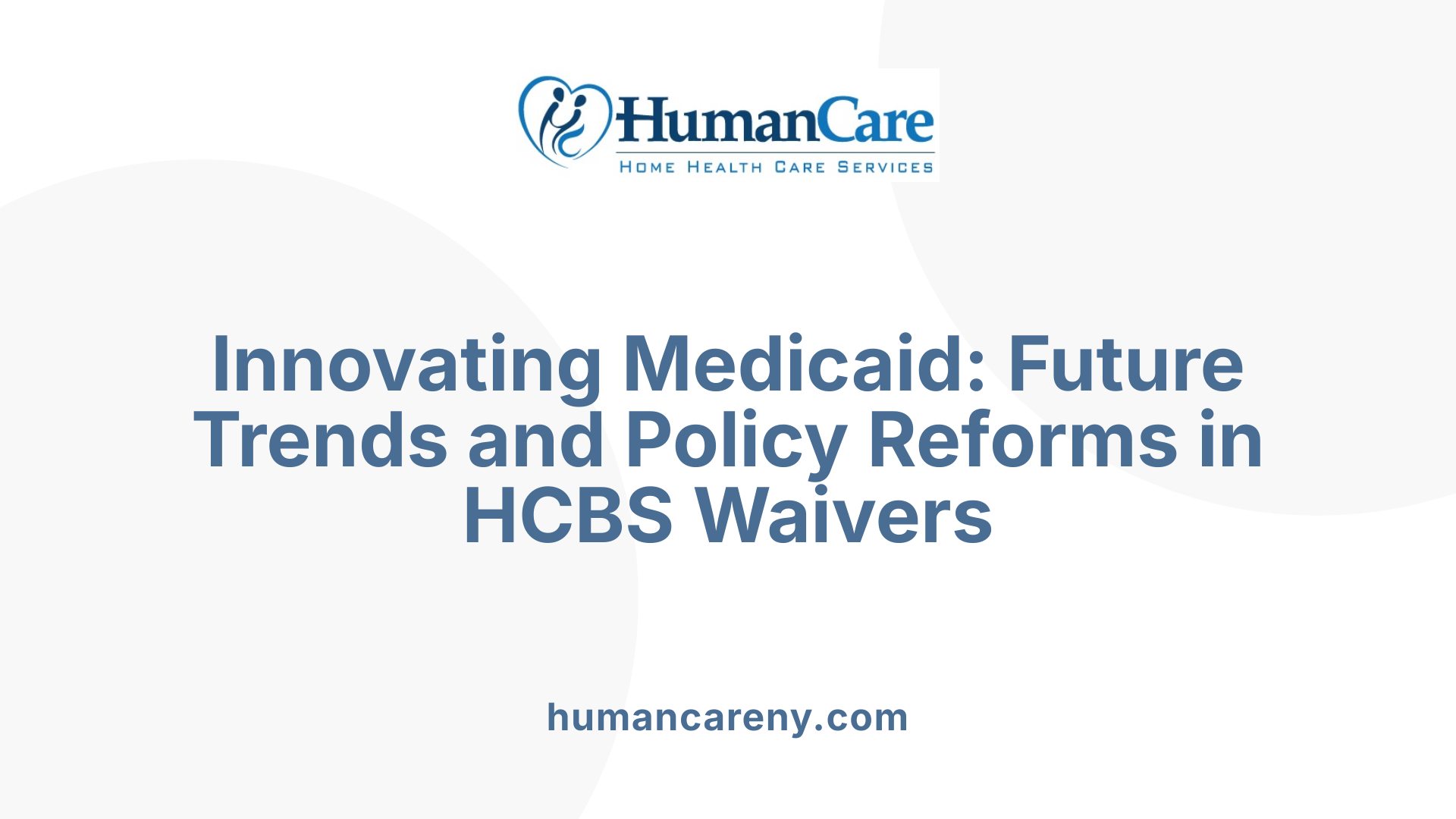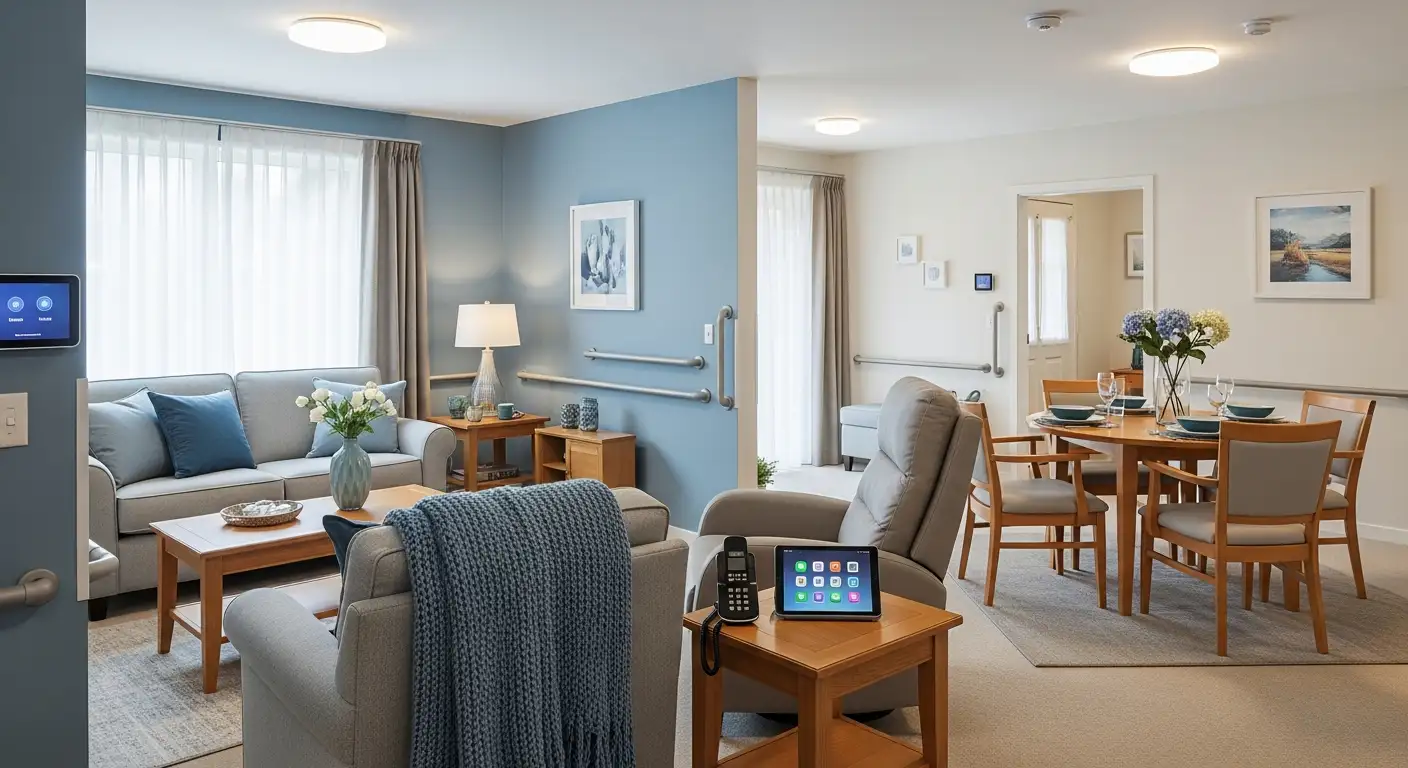Understanding Medicaid waiver program funding mechanisms
Inside Medicaid Waivers: Funding the Future of In-Home Care

Why Medicaid Waivers Matter in Home- and Community-Based Care
Medicaid waiver programs have become a cornerstone in providing person-centered home- and community-based services (HCBS) that allow vulnerable populations, including the elderly and individuals with disabilities, to receive care in their own homes rather than institutions. These programs not only enhance quality of life but also address systemic workforce shortages by innovating care delivery and funding mechanisms. This article explores the funding frameworks behind Medicaid waiver programs, detailing how states leverage these mechanisms to promote consumer-directed care and deliver culturally competent, cost-effective services.
Understanding Medicaid HCBS Waivers and Their Role
What is a Medicaid HCBS waiver?
A Medicaid Home- and Community-Based Services (HCBS) waiver, authorized under section 1915(c) of the Social Security Act, enables states to modify standard Medicaid rules. This allows them to offer home- and community-based services tailored to individuals who require a level of care typically provided in institutional settings. By waiving certain Medicaid requirements, states can provide more flexible and person-centered care options.
Flexibility provided to states under 1915(c) waiver authority
Under the 1915(c) waiver, states can adjust eligibility criteria, the range of services offered, and provider qualifications to better meet the needs of specific populations. For example, states can waive rules on statewideness, comparability of services, and income/resource limits. This flexibility allows states to tailor services geographically or by groups such as the elderly, individuals with behavioral health conditions, or technology-dependent children.
Scope and scale of HCBS waivers nationwide
HCBS waivers are widely used across the United States. Most states and the District of Columbia have active programs—about 257 in total—providing a broad spectrum of support including case management, homemaker services, home health aides, personal care, adult day health, habilitation, and respite care. These waivers promote care in more familiar, community-based settings rather than institutions.
Comparison to institutional care requirements
To qualify for HCBS waivers, individuals must demonstrate the need for a level of care comparable to what they would receive in institutional care. States must also show these programs are cost-effective compared to institutional options while ensuring the protection of enrollees’ health and welfare. Through individualized, person-centered care plans, HCBS waivers support independence and tailored services that meet unique needs.
Funding Mechanisms Behind Medicaid Waivers
Which Medicaid authorities support consumer-directed care programs?
Consumer-directed care programs within Medicaid are primarily supported through the 1915(c) home- and community-based services (HCBS) waiver authority. This waiver grants states the ability to modify standard Medicaid rules on eligibility, what services can be offered, and provider qualifications. Such flexibility allows states to design programs that empower enrollees to manage their own care, including hiring family members as paid caregivers. Other Medicaid authorities, like Connecticut’s 1915(k) Community First Choice program, also support these approaches by permitting budget management and job description creation under oversight.
What financial criteria must states meet for HCBS waivers?
To operate HCBS waiver programs, states are required to prove that these services are cost-effective when compared to institutional care. Financially, they must demonstrate that community-based services prevent costlier hospital or facility placements. Beyond cost, states must ensure the protection of participants’ health and welfare and implement individualized, person-centered care plans tailored to each enrollee’s unique needs.
Financial flexibility given to states
HCBS waivers give states substantial latitude. They can waive Medicaid requirements such as statewideness, comparability of services, and income or resource rules. This enables targeted service delivery to specific populations based on geography, medical condition, or financial eligibility. For example, eligibility criteria may include those needing care at an institutional level but prefer home or community settings.
Use of waivers to tailor eligibility and services
States leverage HCBS waivers to customize service packages including medical and non-medical supports like case management, home health aides, personal care assistance, respite care, and habilitation. These tailored programs support a shift toward home- and community-based care models, resulting in culturally competent, person-directed services that also address workforce challenges by allowing family member employment as caregivers.
Throughout the United States, around 257 active HCBS waiver programs operate to enable these tailored, cost-effective Medicaid services supporting person-centered care and community integration.
Tailoring Eligibility and Services Through Waivers

How can states tailor services using waivers?
States have significant flexibility to modify traditional Medicaid rules through 1915(c) Home- and Community-Based Services (HCBS) waivers. This flexibility allows them to waive certain Medicaid requirements such as statewideness, comparability of services, and strict income or resource rules. As a result, services can be finely targeted to specific geographic areas or tailored to unique population groups such as the elderly, technology-dependent children, individuals with behavioral health needs, or those with certain diseases.
What financial eligibility considerations apply in HCBS waivers?
A notable feature of these waivers is the inclusion of spousal impoverishment protections. This financial safeguard ensures that the community-dwelling spouse of a Medicaid enrollee receiving long-term care can retain a reasonable share of income and assets, preventing financial hardship while enabling the qualified individual to access Medicaid-funded services. This nuanced approach helps maintain families’ financial stability while supporting necessary care.
Comparison to traditional Medicaid requirements
Traditional Medicaid rules require services to be available statewide and comparable for all enrollees. HCBS waivers suspend these requirements, enabling states to design individualized, person-centered care plans that are more responsive to enrollees’ specific needs and circumstances. To participate, eligible individuals must meet an institutional level of care criteria but can then receive services in their homes or communities, promoting independence and quality of life.
States also ensure cost-effectiveness and health protections through oversight and quality management as part of these waivers. Collectively, this approach fosters more culturally competent, accessible, and efficient care models that meet diverse needs beyond what standard Medicaid programs offer.
Consumer-Directed Care: Empowering Participants
What is Medicaid consumer-directed care?
Medicaid consumer-directed care programs give enrollees more control over their personal care by allowing them to manage their own care services. This includes the ability to hire family members as paid caregivers. Such flexibility promotes person-centered care, enabling individuals to receive support tailored to their unique needs and cultural preferences.
How do these programs address workforce shortages?
These programs help alleviate the shortage of formal caregivers by expanding the pool to include trusted family members. Hiring relatives not only fills gaps in available services but also enhances trust and comfort for recipients.
Advantages of Person-Centered Care
Allowing enrollees to choose their caregivers fosters greater independence and satisfaction. Participants can develop job descriptions suited to their needs and oversee their care budgets, with safeguards to prevent misuse. This level of control supports culturally competent care and makes services more responsive.
State Examples Supporting Consumer Direction
- Connecticut’s Community First Choice program permits enrollees to hire family caregivers and manage care budgets.
- Florida’s Medicaid Managed Care Long-Term Care program features a participant-directed option with fee schedules managed by the plan.
- Virginia’s Commonwealth Coordinated Care Plus offers self-direction for personal care services through Medicaid providers with quality oversight.
Overall, consumer-directed care is a growing strategy in Medicaid programs nationwide aimed at improving care quality, addressing workforce demands, and enabling home- and community-based services tailored to individual preferences.
Connecticut’s 1915(k) Community First Choice Program

Features of the program
Connecticut’s 1915(k) Community First Choice program is a Medicaid authority designed to provide enrollees with greater autonomy over their home- and community-based services. It enables participants to receive support tailored specifically to their personal care needs while maintaining control over who provides their care.
Participant control over caregiver hiring
Under this program, enrollees have the ability to hire family members as paid caregivers. This approach not only promotes person-centered care but also addresses workforce shortages by broadening the caregiver pool to include trusted family members.
Budget management
Participants are empowered to develop job descriptions that reflect their exact needs and preferences. Moreover, they manage their own care budgets, giving them flexibility in how funds are allocated to best support their individual circumstances.
Safeguards against fraud
To ensure the program’s integrity, Connecticut has established oversight mechanisms aimed at preventing fraud. These safeguards help maintain accountability while preserving the autonomy of participants in managing their care.
How does Connecticut’s 1915(k) program work?
The program allows enrollees to hire family members as caregivers, develop job descriptions tailored to their needs, and manage budget allocations for their care, all within a framework that includes oversight to protect against misuse of funds. This structure promotes a personalized, efficient, and secure approach to long-term care services.
Florida's Statewide Medicaid Managed Care Long-Term Care Program
What participant-directed options exist in Florida’s Medicaid program?
Florida's Statewide Medicaid Managed Care Long-Term Care program offers an innovative participant-directed option, empowering enrollees to take charge of their care arrangements. Participants can directly hire family members as paid caregivers, fostering personalized, trusted support within the comfort of their homes.
Hiring family caregivers
This flexibility addresses both the need for culturally competent care and workforce shortages by enabling recipients to select caregivers they know and trust—often family members.
Role of managed care plans in fee setting and payments
Within this framework, the managed care plans play a pivotal administrative role. They assign fee schedules for caregiver compensation and handle all payment processing. This system ensures caregivers receive timely and appropriate remuneration while maintaining regulatory oversight to safeguard program integrity and prevent fraud.
Through this model, Florida balances participant autonomy with systematic financial management, promoting person-centered services that align with Medicaid goals of cost-effectiveness and quality home-based care.
Virginia’s Commonwealth Coordinated Care Plus Program Overview
How does Virginia’s program support self-direction in care?
Virginia's Commonwealth Coordinated Care Plus program empowers participants by allowing them to self-direct their personal care services. This means enrollees have the option to hire relatives as their caregivers, offering a personalized approach to long-term care that respects individual preferences and family involvement.
Hiring relatives as caregivers
Participants can choose family members to provide personal care assistance, fostering a supportive environment that values trust and familiarity. This model helps maintain the dignity and comfort of enrollees while addressing workforce shortages in caregiving.
Mediation through Medicaid providers
Although participants direct their care, all services are facilitated through Medicaid-enrolled providers. This ensures that caregivers meet state requirements and the care delivered is consistent with Medicaid standards.
State quality management monitoring
To protect participants' health and welfare, Virginia employs robust quality management processes to monitor these services. This oversight balances self-direction with accountability, safeguarding the integrity and effectiveness of the program.
Types of Services Offered Under HCBS Waivers
What services do HCBS waivers typically cover?
Medicaid Home- and Community-Based Services (HCBS) waivers offer a broad range of both medical and non-medical support options designed to help individuals live safely and independently in their homes and communities.
These services commonly include case management, which assists individuals in coordinating their care and accessing necessary resources. Homemaker services help with household tasks that participants might find challenging. Home health aides provide personal care assistance with activities of daily living, such as bathing and dressing.
Other vital services under HCBS waivers include adult day health programs that offer social and health-related services, habilitation services to support skill development and independence, and respite care that gives temporary relief to primary caregivers.
By combining these various supports, HCBS waivers aim to deliver person-centered care tailored to the unique needs of each enrollee, promoting quality of life while avoiding institutionalization.
Ensuring Health, Welfare, and Person-Centered Plans
How do HCBS waivers protect health and welfare?
States operating Home- and Community-Based Services (HCBS) waivers are required to protect the health and welfare of participants by ensuring they receive safe, effective, and adequate care. This is accomplished through the development of individualized, person-centered plans that address each enrollee's unique needs and circumstances.
Protecting participant safety and welfare
States implement ongoing monitoring and oversight mechanisms to safeguard participants. This includes supervising the quality of care provided, verifying that services meet the participants' health requirements, and preventing abuse or neglect. Oversight efforts involve assessments and follow-ups that maintain the focus on the participant's well-being.
Requirements for individualized care planning
Individualized care plans created under HCBS waivers must be comprehensive and tailored to reflect participant preferences, goals, and choices. These plans coordinate both medical and non-medical support services, ensuring that recipients can live safely and comfortably within their communities.
State oversight roles
State agencies play a crucial role in managing these plans by regulating providers, enforcing compliance standards, and conducting quality management reviews. This ensures that services remain person-centered, cost-effective, and aligned with federal Medicaid requirements.
The Role of Managed Care in Medicaid Waivers

How do managed care plans integrate with Medicaid waivers?
Managed care plans play a significant role in administering participant-directed services under Medicaid waivers, especially in states like Florida. In Florida’s Statewide Medicaid Managed Care Long-Term Care program, the managed care plan handles the fee schedules and manages payments when enrollees choose to hire family members as caregivers.
This arrangement enables enrollees to retain control over caregiving decisions, including selecting and managing their caregiver’s job description. Meanwhile, the managed care plan provides necessary administrative oversight and coordination, helping ensure payments are made accurately and on time.
Fee schedules and payment management
Managed care plans establish fee schedules that set payment rates for caregiving services under participant-directed options. These schedules ensure consistency and fairness in reimbursement rates, assisting participants in budgeting their care expenses effectively.
By managing payment processing, managed care plans reduce administrative burdens on participants while maintaining fiscal accountability. This system balances financial oversight with the enrollee’s autonomy in directing their care.
Balancing participant control with oversight
While managed care plans administer payments and set fee schedules, participants maintain control over crucial caregiving decisions, such as hiring family members and defining their roles. Oversight mechanisms are in place to prevent misuse of funds and ensure quality care without undermining participant independence.
This balance fosters person-centered care by empowering enrollees while ensuring program integrity. Managed care involvement creates a supportive infrastructure that makes consumer-directed Medicaid services viable and sustainable.
| Aspect | Role of Managed Care Plan | Benefit to Participants |
|---|---|---|
| Payment Management | Processes payments, manages fee schedules | Simplifies financial management for participants |
| Administrative Support | Handles paperwork, monitors service delivery | Reduces administrative burden |
| Participant Control | Enrollees hire and direct caregivers | Promotes autonomy and personalized care |
| Oversight | Ensures fraud prevention and quality assurance | Protects both program funds and participant welfare |
Cost Savings and Efficiency Through Waivers
Why do states promote HCBS waivers from a cost perspective?
States actively promote Home- and Community-Based Services (HCBS) waivers because these programs offer substantial economic benefits by reducing reliance on costly institutional care. HCBS allows Medicaid enrollees to receive personalized support in their homes or communities, which tends to be more cost-effective than nursing facilities or hospitals.
Economic benefits of home-based care
Transitioning care from institutions to community settings can significantly curb Medicaid spending. This shift not only helps states allocate resources more efficiently but also supports improved health outcomes and enhances the quality of life for enrollees by enabling person-centered care.
State incentives to prefer HCBS
Many states harness federal flexibility allowed under Medicaid authorities such as the 1915(c) waiver to tailor HCBS programs that address local demographics and healthcare needs. These waivers let states waive some standard Medicaid rules, making it easier to provide culturally competent, individualized services including hiring family members as caregivers.
Impact during and after the pandemic
The COVID-19 pandemic underscored the value of HCBS by highlighting the vulnerabilities of institutional settings. States increased investment in consumer-directed care models to promote safer, home-based alternatives. This trend continues post-pandemic, as states find HCBS not only more cost-effective but vital for resilient, community-oriented supports.
In essence, HCBS waivers help states strike a balance between managing Medicaid costs and delivering tailored, high-quality care throughout and beyond times of crisis.
Culturally Competent Care via Consumer-Directed Models
How do consumer-directed models support culturally competent care?
Consumer-directed care models empower Medicaid enrollees to hire family members or trusted individuals as paid caregivers. This approach ensures that care is personalized and respects the cultural values and preferences of the individual receiving services. By involving family caregivers who understand the enrollee's cultural background, language, and traditions, care becomes more congruent with the person's lifestyle, leading to higher satisfaction and better health outcomes.
Customized care respecting cultural preferences
These programs, often operating under Medicaid authorities such as the 1915(c) HCBS waiver, allow flexibility in tailoring care plans to meet unique cultural needs. Enrollees can develop job descriptions that reflect their preferences and manage their own care budgets under programs like Connecticut's 1915(k) Community First Choice. This fosters an environment where consumers feel empowered and supported in making decisions that honor their culture.
Role of family caregivers in culturally congruent care
Family members acting as caregivers bridge cultural understanding gaps often found in traditional care models. For example, Florida's participant-directed option within the Statewide Medicaid Managed Care program allows enrollees to hire relatives who inherently provide culturally sensitive assistance. Virginia’s programs similarly facilitate hiring relatives, ensuring care aligns with ethnic customs while maintaining quality through state oversight.
Overall, these consumer-directed models strengthen person-centered, culturally competent care by integrating family involvement and providing individuals control over their support services.
Addressing Workforce Challenges Through Program Design

How do Medicaid waiver programs help solve workforce shortages?
Medicaid waiver programs help alleviate workforce shortages by officially recognizing family members and informal caregivers as paid providers. This inclusion broadens the caregiving workforce, enabling more enrollees to receive the home and community-based services they need without relying solely on professional caregivers who may be in limited supply.
Alleviating caregiver shortages
States use consumer-directed care models under Medicaid waivers, such as the 1915(c) and 1915(k) authorities, to create flexible programs where enrollees can hire family members directly. For example, Connecticut’s Community First Choice program allows participants to develop job descriptions and manage their budgets, effectively expanding the pool of caregivers beyond traditional providers.
Engaging informal caregivers
These programs actively engage informal caregivers, often family members, by compensating them for the care they provide. Florida’s participant-directed option under its Medicaid Managed Care program assigns fee schedules and manages payments, facilitating easier participation for family caregivers. Similarly, Virginia’s Commonwealth Coordinated Care Plus program ensures that relatives can be paid caregivers, with the state monitoring quality and compliance.
Sustainability of Medicaid home care programs
By embracing consumer-directed models, states improve program sustainability through cost savings and enhanced person-centered care that respects cultural competence. Such designs also support continuity of care during crises, such as the COVID-19 pandemic, by maintaining accessible and personalized home care options.
Ultimately, Medicaid waiver programs that include family caregivers directly address workforce gaps while promoting better outcomes for those needing long-term services and supports.
Future Directions and Policy Considerations

What are the emerging trends in Medicaid waiver funding?
States are moving toward innovative Medicaid waiver models that prioritize consumer-directed care options. These programs enable enrollees to hire family members as paid caregivers, which supports person-centered care and helps address caregiver workforce shortages. Flexibility in program design is increasing, with waivers allowing states to tailor eligibility criteria and service offerings to better serve diverse populations.
Trends in Medicaid Waiver Innovations
Many states are enhancing waiver programs to foster culturally competent services and promote home- and community-based care (HCBS). The use of different Medicaid authorities, such as the 1915(c) waiver and the 1915(k) Community First Choice option, illustrates efforts to give enrollees more control over their care budgets and service delivery while including safeguards to prevent fraud.
Potential Expansions and Reforms
Policy discussions continue about broadening waiver eligibility and services, with a focus on expanding access. States like Connecticut, Florida, and Virginia serve as models by integrating participant-directed options within their managed care and HCBS frameworks. These models allow enrollees to manage their care, including hiring relatives, supported by oversight mechanisms that ensure quality and accountability.
Balancing Fiscal Responsibility with Care Quality
Waiver programs must demonstrate cost-effectiveness compared to institutional care while maintaining individualized, person-centered service plans. States balance fiscal responsibility by leveraging waivers that allow targeted services and waiving certain Medicaid requirements. This approach helps contain costs without compromising the quality or safety of care provided.
These ongoing innovations and reforms in Medicaid waiver programs indicate a future direction that emphasizes autonomy, diversity in care options, and sustainable funding, ultimately aiming to enhance the quality of life for Medicaid enrollees.
Medicaid Waivers: A Sustainable Path for In-Home Care Funding
Medicaid waiver programs represent a vital funding mechanism supporting the shift from institutional care to home- and community-based settings. Through flexible authorities like the 1915(c) waiver and innovative consumer-directed models, states can tailor eligibility, empower participants, and address workforce challenges while balancing cost control and care quality. As demographics shift and care needs evolve, continued investment and policy innovation in Medicaid waivers will be crucial to sustaining accessible, culturally competent, and person-centered in-home care for vulnerable populations.



































































































